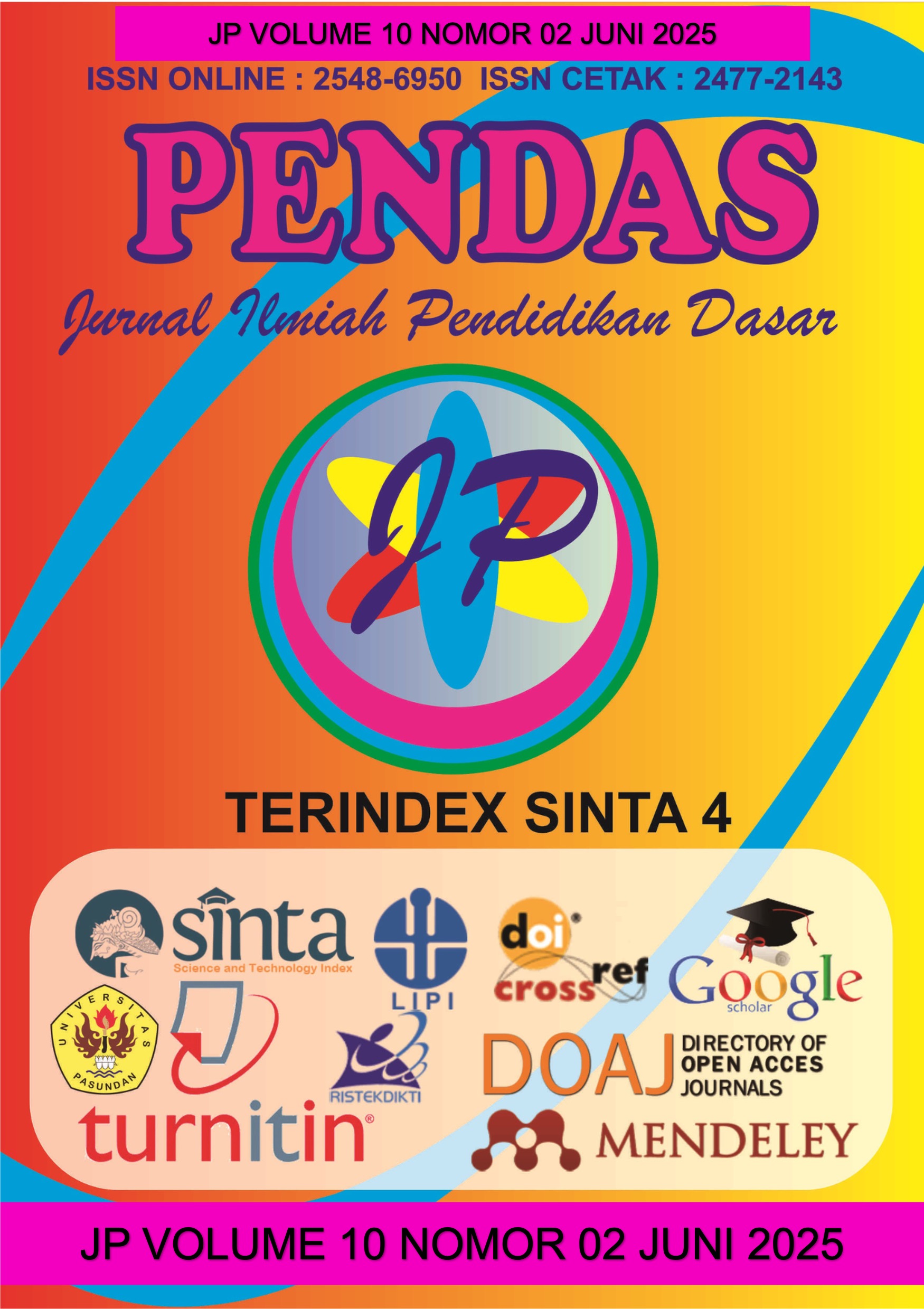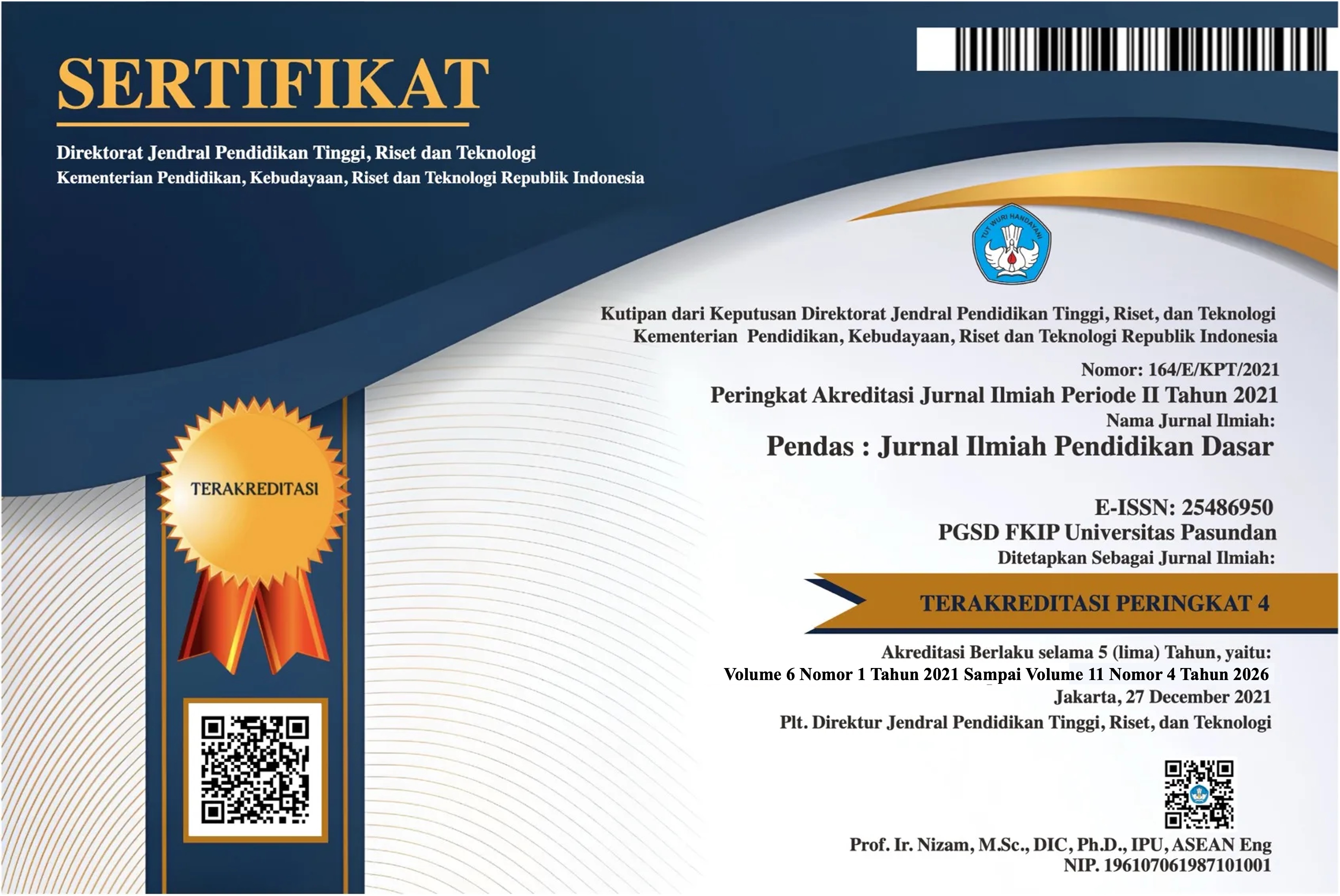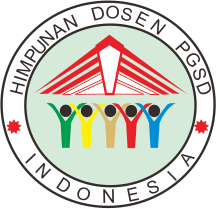MENINGKATKAN MOTIVASI DAN HASIL BELAJAR SISWA MELALUI MODEL MIND MAPPING PADA PEMBELAJARAN PENDIDIKAN PANCASILA DI KELAS V SDN RAPPOKALLING 67/1
DOI:
https://doi.org/10.23969/jp.v10i02.27021Keywords:
Mind Mapping, Learning Motivation, Learning Outcomes.Abstract
Chairul Agung Tunny, 2025. Enhancing Students’ Motivation and Learning Outcomes Through the Mind Mapping Model in Pancasila Education at SDN Rappokalling 67/1, Makassar City. Undergraduate Thesis, Department of Primary School Teacher Education, Faculty of Teacher Training and Education, Muhammadiyah University of Makassar. Supervisors: Abdul Azis and Rismawati. This research aims to improve students’ motivation and learning outcomes in the subject of Pancasila Education by applying the mind mapping learning model in Class V of SDN Rappokalling 67/1, Makassar. The study was conducted in response to the low motivation and learning results among students, which were attributed to unengaging, teacher-centered teaching methods. The method used was Classroom Action Research (CAR), conducted in two cycles. Each cycle consisted of four stages: planning, implementation of action, observation, and reflection. Instruments used in the research included learning motivation observation sheets and tests for learning outcomes. The results showed that the mind mapping model had a positive impact on student motivation. In the first cycle, 18 students were categorized as having "fair" motivation and 2 students "good." By the second cycle, the results improved significantly, with 3 students reaching the "very good" category and 20 students in the "good" category, while no students were in the lower categories. Regarding learning outcomes, only 8 students (34%) met the mastery criteria in the first cycle, which increased to 21 students (91%) in the second cycle The conclusion is that the mind mapping model is effective in enhancing both learning motivation and outcomes. Teachers are encouraged to adopt this strategy as an alternative method in Pancasila Education to create more engaging and effective learning experiences.
Downloads
References
Jainiyah, J., Fahrudin, F., Ismiasih, I., & Ulfah, M. (2023). Peranan Guru Dalam Meningkatkan Motivasi Belajar Siswa. Jurnal Multidisiplin Indonesia, 2(6), 1304–1309. https://doi.org/10.58344/jmi.v2i6.284
Julyanti, E. (2021). Pengaruh Motivasi Terhadap Hasil Belajar Siswa Sekolah Menengah Pertama. Jurnal Pembelajaran Dan Matematika Sigma (Jpms), 7(1), 7–11. https://doi.org/10.36987/jpms.v7i1.1942
Kustiani, L., & Hariani, L. S. (2018). Faktor-Faktor Yang Mempengaruhi Hasil Belajar Siswa. 12(1), 14–22.
Mania, S. (2008). Observasi Sebagai Alat Evaluasi Dalam Dunia Pendidikan Dan Pengajaran. Lentera Pendidikan : Jurnal Ilmu Tarbiyah Dan Keguruan, 11(2), 220–233. https://doi.org/10.24252/lp.2008v11n2a7
Masni Harbeng. (2019). Strategi Meningkatkan Motivasi Belajar Mahasiswa. Dikdaya, 05(01), 3.
Nurrita, teri. (2018). Media Pembelajaran dan Meningkatkan Hasil Belajar Siswa. Misykat, 03(01), 171–187.
Parawangsa, E., Dewi, D. A., & Furnamasari, Y. F. (2021). Hakikat Pendidikan Kewarganegaraan di Sekolah Dasar ( SD ). 5, 8050–8054.
Ppkn, K. (2023). J P 3 T. 2, 58–64.
Prof. Dr. IG.A.K. Wardani, M. S. E. (2000). Hakikat Penelitian Tindakan Kelas. Penelitian Tindakan Kelas, 1(3), 5–7.
Downloads
Published
Issue
Section
License
Copyright (c) 2025 Pendas : Jurnal Ilmiah Pendidikan Dasar

This work is licensed under a Creative Commons Attribution 4.0 International License.



















